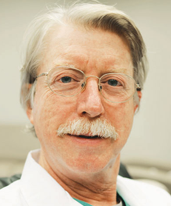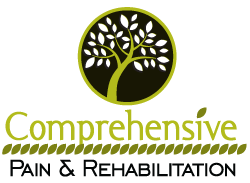Spotlight on Pain
 Story by: Lynn Lofton
Story by: Lynn Lofton
South Mississippi Living, July, 2013 issue
Chronic pain is more than just aches and pains that come and go. It’s all the time, every day, and one in three Americans suffers from it. Usually the first course of action is medication — enough painkillers were prescribed in 2010 to medicate every American adult around the clock for a month. Patients also have surgery in the quest to be pain free. But what happens when neither of these actions work?
Laura Owens is a 35-year-old Biloxi resident who knows about chronic pain and the struggle to overcome it. A busy Air Force wife and mother, her pain began in her late 20s during the pregnancy of her second child. “There was no accident or fall or anything that normally causes pain, but my lower back started hurting on one side,” she recalls. “It increased until it was always hurting, and I wasn’t able to perform every day tasks.”
Owens, with the support of husband Brian, saw countless physicians, including four neurosurgeons and three pain management specialists, plus four physical therapists. She tried all kinds of medication but was still in pain. She then had surgery, which revealed that her spinal cord is half the size of a normal person’s spinal cord.
However, things are now looking up for Owens and other chronic pain sufferers thanks to intraspinal neurostimulation implants, or spinal cord stimulation, that mask the pain messages sent to the brain. The implanted device sends electrical impulses that trigger nerves selectively along the spinal cord. Patients control their pain using a cordless remote with a portable charger.
Thomas L. Yearwood, M.D. of Comprehensive Pain & Rehabilitation in Biloxi and Pascagoula, implanted the Precision Spectra system in Owens in January. He says Owens, as a young mother of active children, was a good candidate for this treatment.
“The chronic neuropathic pain she suffered significantly curtailed her ability to care for her family as she desired,” Yearwood said. “Her pain pattern is somewhat complicated in distribution and it was clear that while neurostimulation therapy could be quite advantageous for her low back pain, collateral stimulation into her legs would be virtually unavoidable and quite distracting in her daily activities.”
Yearwood, who also has a Ph.D. in bioengineering, realized Owens needed a much more sophisticated and advanced technological neurostimulation system to best treat her pain problem. “As with virtually all medical care for chronic conditions, our results are not perfect, but I believe they have been quite helpful for Mrs. Owens,” he said. “Five years ago we could not have achieved these same results. It is exciting to think that five years from now we may be able to make simple modifications and achieve even greater results for patients like Mrs. Owens.”
Owens doesn’t mince words. “It’s amazing; I feel great,” she says. “It’s hard to describe the relief I get. It makes the pain 80 percent better every day. I feel like a guinea pig with this new system, but that’s okay!”
She adds that her pain will get bad if she lets her implant battery run down. She straps on the charger belt to recharge her battery and she’s good to go. This device is so sophisticated it has a remote control that Owens can use to change the program. For instance, if her legs hurt more than her back, she can direct more stimulation to that part of her body.
“The results can be excellent, and for many patients nothing short of miraculous,” Yearwood says. “These systems allow a test drive, or trial, for four to seven days prior to implantation. If the trial is successful — and about 95 percent are — the device is implanted.”
This success rate is better than the national average of 70 percent. Yearwood and his associates, Matthew Barfield, D.O., and Huntington Hapworth, M.D., say they are seeing patients every day who are able to return to work and their normal activities as they “come back to life.”
